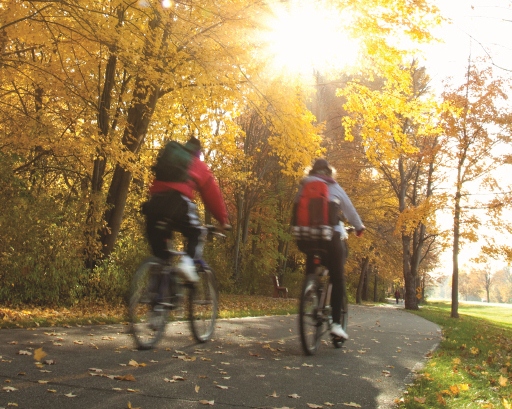
Matt Doll, Minnesota Environmental Partnership
The Minnesota Legislature has made it clear that they’re planning to cut spending from numerous areas of government spending. That includes troubling potential cuts to a category of investments that Minnesota can ill afford to lose: clean transportation.
Transportation is Minnesota’s largest source of carbon emissions and has remained stubbornly high even as electric vehicles become more popular and electricity generation becomes cleaner. While EVs are part of the solution, they’re not a silver bullet. To meet our emission reduction goals, along with air pollution and road accidents, we also need to reduce the total number of vehicle miles traveled (VMT) on Minnesota roads. That’s no easy task, given that Minnesota has the nation’s fifth-largest road system.
The best way to get there is smart land use and investments in transit and infrastructure for pedestrians and cyclists. These investments come with additional benefits, making communities healthier and giving all families – especially those with lower incomes – more options for travel.
The Legislature’s Transportation Conference Committee is currently considering HF 2438, a bill with differing House and Senate versions, neither of which are particularly friendly to clean transportation. Both versions would reduce funding for public transit, with the House version enacting deeper cuts.
- Both would cut $32.5-$40 million over the next biennium for Metro Transit. The state’s largest transit agency has recently benefited from a new Twin Cities-area sales tax for transit operations and is looking to expand services. These cuts would limit their ability to keep improving.
- The House bill has proposed a $12 million cut for Greater Minnesota transit over the next biennium, leaving residents throughout the state with fewer transportation options. It would also cut $27 million for special transportation services like Metro Mobility, $4 million from Active Transportation (infrastructure for biking, walking, and rolling), and $8.9 million from passenger rail funding over the same time period, with more cuts slated for the following two years.
The House bill also targets a groundbreaking policy that Minnesota passed two years ago: the Driving Down Emissions law. This law requires MnDOT to study and mitigate the climate impact of highway projects. Highway expansions have often resulted in damage to surrounding communities and natural spaces, and they drive up the total vehicle miles traveled – and thus the carbon pollution – of communities due to a phenomenon called induced demand.
The House bill would delay the implementation of the Driving Down Emissions law’s greenhouse gas and VMT standards for highway projects by over three years. MnDOT doesn’t support this rollback, but as of this writing, it’s still on the table.
Finally, both bills would implement an increase on the surcharge for sales of new EVs from $75 to $200. That’s not an enormous cost relative to the cost of a car, but it is a punitive measure, and Minnesota is better off encouraging vehicle electrification, not hindering it.
MEP took part in a coalition letter to the Conference Committee expressing our concerns about this bill’s potential to take a bite out of clean transportation progress. Negotiations on this bill are underway.
At this point, it’s hard to predict what the final results will hold, and it’s now expected that a special session will be required to pass a complete budget. One thing is for certain: there’s a lot on the table, and Minnesotans’ voices can still help make the difference.
The faster we build out clean transportation options – and reduce wasteful highway expansions that harm our climate – the better off our communities and planet will be. We encourage you to contact your legislators and share that message.